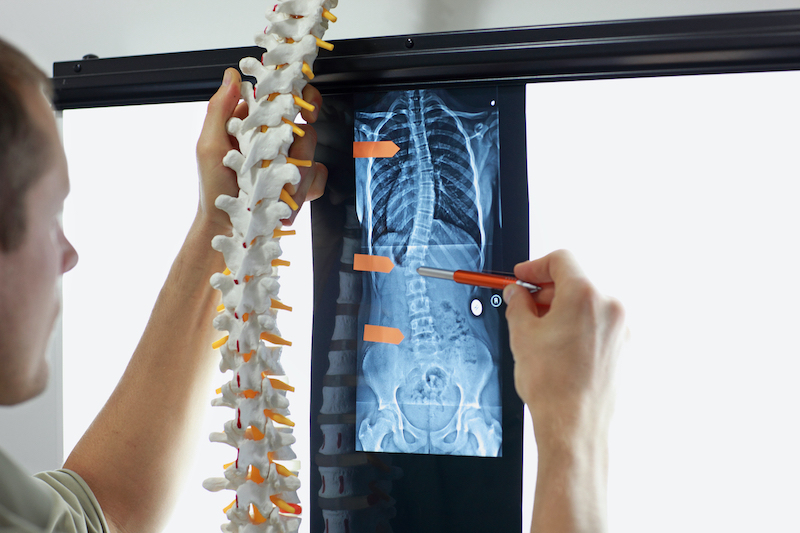Back and Spine Health
Exercise, Epidural steroid injection, Physical therapy, and NSAIDs are all excellent ways to relieve pain. While none of these methods are foolproof, they can often reduce the discomfort caused by your herniated disc after consulting your physician or spine surgeons in Henderson, NV.

In this article, we’ll examine the pros and cons of each one. And finally, we’ll discuss what exercises you can do to reduce your pain.
1. Exercise
Exercise for Lumbar herniated discs can help relieve the painful symptoms of a herniated lumbar disc. By improving mobility and promoting healing, these exercises help the body’s natural ability to heal itself. Listed below are some recommended exercises for lumbar herniated discs. This article will discuss some of these exercises and their benefits. When done correctly, these exercises can also help improve the overall health of the back.
Many people suffer from the uncomfortable symptoms of a lumbar herniated disc. The treatment options for herniated discs vary depending on the area of the spine and the size of the bulge. Although exercise for lumbar herniated disc pain relief can relieve symptoms fast, it should not be viewed as a complete cure for the condition. To get a full assessment of your symptoms, it is important to visit your doctor and/or physical therapist for a diagnosis.
2. NSAIDs
NSAIDs are a powerful tool for pain relief. When used by prescribed doses, NSAIDs reduce inflammation around spinal nerves and relieve pain. This treatment is usually only used after nonsurgical measures have failed. A doctor will inject the mixture around the nerve root using fluoroscopy. Corticosteroids are powerful anti-inflammatory drugs that are injected into the epidural space, the fluid-filled space surrounding the spinal cord. During the procedure, patients are given local anesthesia and NYU Langone pain management specialists use X-ray guidance to inject the medicine accurately. The procedure is short and simple and usually takes less than 30 minutes.
Herniated disc pain can result in numbness or burning in the leg. It can also be accompanied by stiffness or tingling. A doctor may prescribe muscle relaxant drugs to help patients manage the pain. These medications calm spasms and allow the patient to move more easily. NSAIDs may be prescribed for a week or two, but the pain typically subsides on its own after a few days.
3. Epidural Steroid Injections
Epidural steroid injections for lumbar herniated disc pain relief involve the use of a needle to deliver a mixture of steroid and numbing medicines. The injection works by reducing swelling around the spine and relieving pressure on the larger nerves that surround the spinal cord. Because the steroid and numbing medications are delivered via the epidural space, they are highly effective for relieving pain in the back. However, they don’t always bring about the pain relief expected.
In a recent study, ESIs were used for lumbar disc herniation. Patients were injected with steroids at a level one or two above the level of the disc herniation. Forty-two to five-six percent of the patients experienced improvement with ESI. The patients who received ESIs and underwent a subsequent discectomy cross-over did not experience any significant negative effects from the delay in decompression surgery.
4. Physical Therapy
Physical therapy can be an excellent treatment option for lumbar herniated discs. Your therapist will conduct an evaluation of your condition to determine the best course of treatment. In addition to physical therapy, your doctor may prescribe prescription medications or use other methods to reduce inflammation and relieve pain. These treatments may include ultrasound therapy, ice and heat therapy, stretching exercises, and physical rehabilitation. Your doctor may also prescribe pain medication or suggest surgery. Both types of treatments have their pros and cons.
A physical therapist will use various techniques to treat your lumbar herniated disc pain. Passive treatments involve massage and deep tissue manipulation. Hot and cold therapy are also commonly used. TENS machines and hydrotherapy are two examples of active treatments. These methods improve joint mobility and stability, and build strength. Active treatments involve strengthening exercises and core stability programs. For most patients, physical therapy is the best way to combat recurrent pain and improve overall health as well as consulting with your local spine surgeons in Henderson, NV.